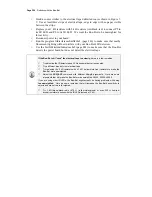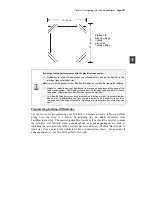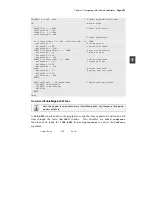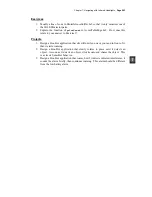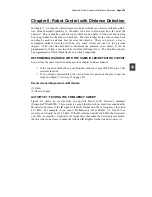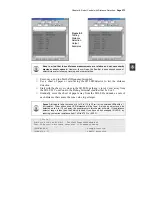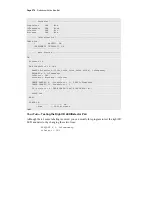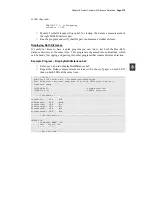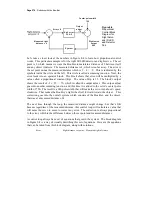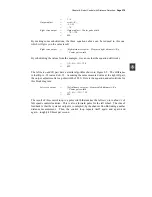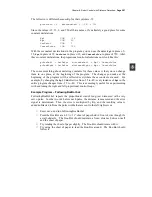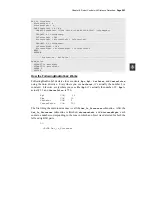
Chapter 8: Robot Control with Distance Detection
· Page 269
Chapter 8: Robot Control with Distance Detection
In Chapter 7, we used the infrared sensors to detect whether an object is in the Boe-Bot’s
way without actually touching it. Wouldn’t it be nice to also know how far away the
object is? This is usually a task for sonar, which sends a pulse of sound out and records
how long it takes for the echo to come back. The time it takes for the echo to come back
can then be used to calculate how far away the object is. There is, however, a way to
accomplish distance detection with the very same circuit you used in the previous
chapter. With your Boe-Bot able to determine the distance of an object, it can be
programmed to follow a moving object without colliding into it. The Boe-Bot can also
be programmed to follow black tracks on a white background.
DETERMINING DISTANCE WITH THE SAME IR LED/DETECTOR CIRCUIT
You will use the same circuit from the previous chapter to detect distance.
√
If the circuit is still built on your Boe-Bot, make sure your IR LED’s have 1 k
Ω
resistors in series.
√
If you already disassembled the circuit from the previous chapter, repeat the
steps in Chapter 7, Activity #1 on page 237.
Recommended Equipment and Materials:
(1) Ruler
(1) Sheet of paper
ACTIVITY #1: TESTING THE FREQUENCY SWEEP
Figure 8-1 shows an excerpt from one specific brand of IR detector’s datasheet
(Panasonic PNA4602M). This excerpt is a graph that shows how much less sensitive this
IR detector becomes if the IR signal it receives flashes on/off at a frequency other than
38.5 kHz. For example, if you send it IR flashed on/off at 40 kHz, it’s only 50% as
sensitive as it would be at 38.5 kHz. If the IR is flashed on/off at 42 kHz, the detector is
only 20% as sensitive. Especially for frequencies that make the detector less sensitive,
the object has to be closer to make the reflected IR brighter for the detector to detect it.


